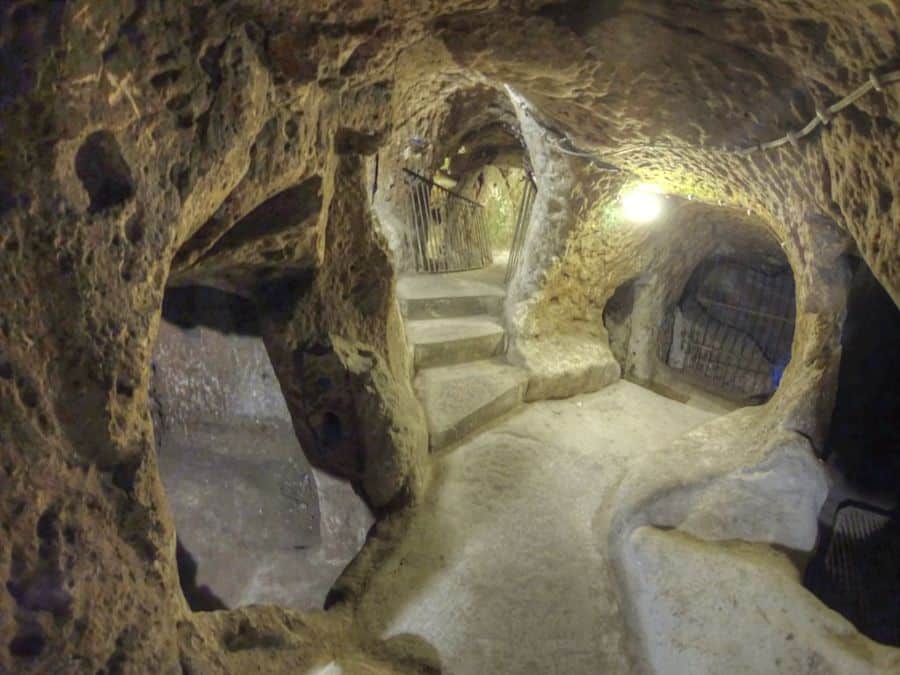

Deep beneath central Turkey lies Derinkuyu, an ancient underground city once known to its Greek inhabitants as Malakopea (Greek: Μαλακοπή). For centuries, its stone-carved halls echoed with the sounds of ancient life. Now, a new study has recreated that soundscape for the first time.
Sezin Nas, a researcher in architecture and acoustics at Istanbul Galata University, has led efforts to revive the lost sounds of the city through a 3D virtual model. Her work offers a rare glimpse into the lived experience of those who once called the city home.
Derinkuyu has a complex and multicultural past. Originally built by the Phrygians in the 8th century BCE, it was later expanded by Greek-speaking Christians during the Byzantine era.
The oldest written source about underground structures is the writings of the ancient Greek military leader and historian Xenophon. In his Anabasis (circa 370 BCE), he writes that the people living in Anatolia had excavated their houses underground, living well in accommodations large enough for the family, domestic animals, and supplies of stored food.
The city served as a refuge during invasions, including the Arab-Byzantine wars and Mongol attacks. It remained inhabited by Cappadocian Greeks until 1923, when, following the mass killing of the Christian population across Turkey, the surviving Cappadocian communities were forced to leave their native homeland and resettle in Greece under the terms of the Greek–Turkish population exchange.
At its peak, Derinkuyu could hold up to 20,000 people across seven underground levels. It featured churches, kitchens, homes, schools, and storage rooms. A system of large and small ventilation shafts provided air and connected spaces, physically and acoustically.

“There is a notable gap in the literature regarding the acoustic environment and soundscape of underground cities,” Nas said.
Her research reveals that the city’s ventilation shafts served not only for airflow but also for communication. Voices and sounds could carry between rooms and levels, creating an interconnected audio environment.
“This multifunctional use of the ventilation system strongly highlights the exceptional construction process of the site and plays a central role in shaping its soundscape,” she said.
“Listening to the reconstructed soundscape provides insights into how sound influenced spatial experience, communication practices, and social organization within the underground city.”
To reconstruct the sound environment, Nas analyzed three key spaces: a church, a kitchen, and a living area. She studied their acoustic properties – how sound would bounce, echo, and fade – based on size, material, and use. The result is a 3D virtual soundscape that reimagines what the city may have sounded like in its prime.
Explore Derinkuyu: Turkey’s Ancient Underground City!
pic.twitter.com/iSDweXQ2tN
— OANASA (@OANASA_X_) May 12, 2025
Nas presented her findings on Wednesday during the 188th Meeting of the Acoustical Society of America and the 25th International Congress on Acoustics, held from May 18 to 23.
“Derinkuyu underground city is considered an interior environment on an urban scale,” Nas said. “Listening to the reconstructed soundscape provides insights into how sound influenced spatial experience, communication practices, and social organization within the underground city.”
She hopes her work with the sounds of ancient life in Turkey will encourage greater use of soundscapes in historical research. Beyond technical insight, she views the study as a way to honor and preserve a forgotten layer of cultural identity.
“This research also highlights the role of historical sound environments,” Nas said. It is “an important and often overlooked component of cultural heritage.”
